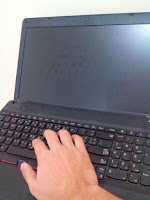Green IT
What is Green IT?
 Green IT (Green Information Technology) is the technological development of environmentally friendly sustainable computing or IT which includes designing, manufacturing, using and arranging of computer, servers, and related subsystems such as monitors, printers, storage devices, and networking and communications systems efficiently and effectively with lesser or no impact on the environment. A typical computer consists of thousands of chemicals and if we put all the computers in the world together, they utilize huge amount of electricity. Goals of green computing are to reduce the use of hazardous materials, maximize energy efficiency during lifetime of the product and promote the biodegradability of during the product's lifetime, and promote the biodegradability of obsolete products and factory waste.
Green IT (Green Information Technology) is the technological development of environmentally friendly sustainable computing or IT which includes designing, manufacturing, using and arranging of computer, servers, and related subsystems such as monitors, printers, storage devices, and networking and communications systems efficiently and effectively with lesser or no impact on the environment. A typical computer consists of thousands of chemicals and if we put all the computers in the world together, they utilize huge amount of electricity. Goals of green computing are to reduce the use of hazardous materials, maximize energy efficiency during lifetime of the product and promote the biodegradability of during the product's lifetime, and promote the biodegradability of obsolete products and factory waste.Key areas of Green IT
A computer contains over one kilogram of lead and different type of chemicals which includes antimony, arsenic, boron, phosphor, nitric acid, hydrofluoric acid, and hydrogen fluoride etc. Electronics contain copper. This toxic and inefficient cocktail is where the term eWaste (electronic waste) has been created. Another reason is we have limited resources on earth. When we use minerals like gold and silver and we don't recover them, those minerals are deducted from our overall supply. Eventually, very few total will remain. These resources available to us no longer if we don't recycle what we use.
Energy can also be saved through cloud computing, namely the principle of outsourcing the programs and functions of one’s own computer to service providers over the internet. It is also called sharing storage capacity with others. In this case, smaller devices, some purely mobile, are all that is required to handle large volumes of data.
Another idea is the joint use of purely virtual space. ‘Digital sharing’ is the way of putting it. New ideas and programmes for video conferences are presented here in order to prevent people from taking unnecessary flights and to be climate-friendly by shifting business meetings to their own desk. Energy can be saved by using a laptop instead of a large desktop computer at workplaces or in home offices. Because, laptop components are energy optimized, primarily to ensure that the battery lasts longer.
Bringing modern LCD monitors into the picture is also a better idea of Green IT. Because, traditional CRT monitors have particularly high energy consumption. A classic green IT tip is to abandon the power-guzzling stand-by mode. We now have a range of different electrical sockets with on-off switches that should be deployed when using electronic devices for longer periods.
IT Managers can monitor energy requirements and can cap power usage and place servers in power saving mode with server power management. We can also apply green storage technique. For example, instead of running database that requires 5000 IOPS on 250 disk drives, put the heaviest hit portions of that database on a pair of mirrored and protected solid states disks.The rest of the data can use a smaller number of traditional fast disks while backups can go to high capacity SATA drives.
Enterprise desktop power management software automatically places monitors and computers into low power modes-sleep or hibernation.Using blanking panel in the data center infrastructure is another example of green IT. Going paperless plays an important role in green IT. Using more papers to print documents requires additional power consumption and ink of printers which creates additional cost and also it has significant impact on earth.Because,in order to produce papers, paper industries require massive power consumption and emission of greenhouse gas. So, reducing the use of paper and increasing the use of soft copy for documentation can contribute developing Green IT significantly.
- Green Business
What is Green Business? A green business is a business which consists minimal negative impact on environment, community, society and economy. It develops business policies and demonstrates commitment to a healthy and sustainable future. A green business...
- Green Data Center
A data center is the house of integrated system of computers, telecommunications and storage devices wherein data is stored. Typically, a data center consists of backup power supplies, surplus data communications connections, air conditioning system,...
- Green Cell Phone
Now a days, cell phones are obviously playing a significant role in our life. At present, we can instantly communicate with each other by using cell phone. But, there is an inherent impact on our environment during using cell phones. When we talk or send...
- Green Energy
What is Green Energy? Green Energy is the energy which is produced from natural resources like sunlight, wind, tidal wave and geothermal heat. It is also called renewable energy or alternative energy and sustainable energy. Green Energy...
- Roof Top System- Its Components
A Solar System generally comprises of the following elements: Solar Panel, a Charge Controller, a Power Inverter, a Monitor and Electrical Distribution System. As seen with each other technologies each component has different manufacturers , quality,...
